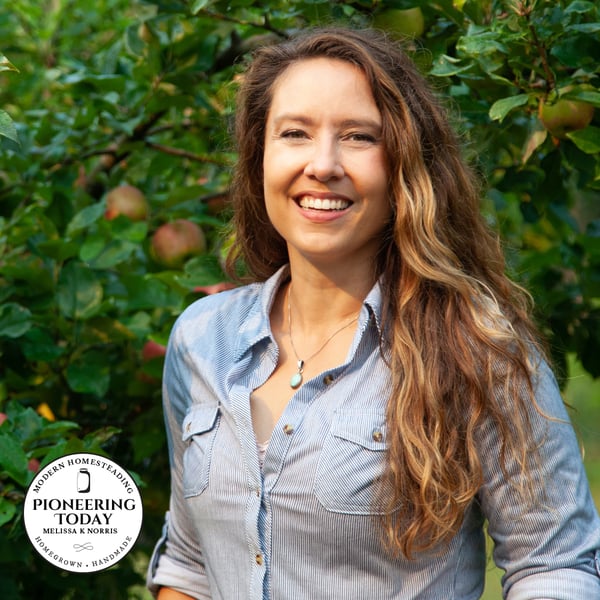EP 443: Pasture Rehabilitation with Expert Karson Rippstein from Redmond Agriculture
Pioneering Today
Melissa K Norris
4.9 • 931 Ratings
🗓️ 20 September 2024
⏱️ 15 minutes
🧾️ Download transcript
Summary
When raising cattle, the feed is the most expensive part! If you can grow your own feed in a pasture, you’ll be drastically cutting the cost of raising those cattle. For us, we purchased 40 acres of farmland two years ago and have been trying to rehabilitate the pasture grasses to help offset our feed bill. We knew we were battling thistle, but it turns out, the thistle wasn’t the problem, it was the only a symptom of a larger issue. Listen to this podcast episode with Karson Rippstein from Redmond Agriculture as he helps uncover the problems we’re facing in our pastures. For more information and any links mentioned in this episode, visit https://melissaknorris.com/443.
Transcript
Click on a timestamp to play from that location
| 0:00.0 | One of the most expensive parts that actually come with raising cattle, especially for beef, is your feed. |
| 0:07.0 | Now if you live in a growing climate where you can grow grass and pasture almost all year long, |
| 0:12.0 | that obviously greatly reduces. pasture almost all year long. |
| 0:12.6 | That obviously greatly reduces your cost. |
| 0:16.3 | However, if you live in a northern climate like we do, |
| 0:19.8 | we really only can have actively growing grass depending upon the weather for the year |
| 0:25.0 | really is like May through October and that's if we get enough rainfall in July and |
| 0:30.8 | August there have been years that we've actually had to start feeding hay in August |
| 0:34.7 | simply because everything dried up and there was not enough feed for the cows. So |
| 0:41.6 | solving that problem so that you can have your pasture grow even through the drought as well as into the cool months and kind of have that variety is really key because that can cut your costs almost in half, |
| 0:55.5 | especially if you can have more standing forage as we move into the cold months |
| 1:01.9 | where the grass isn't growing, but if we've got a lot of |
| 1:04.3 | top a lot of growth there to turn them on that can be almost an entire month's worth of |
| 1:09.7 | extra that we're not having to buy hay for. Plus if we can get our pastures to a |
| 1:16.2 | point of fertility that they're producing double, then we have the potential |
| 1:20.5 | that we could actually hay some of our own pastures and not have to buy all of our own hey. So all of that is |
| 1:35.0 | less than ideal soil health, |
| 1:38.0 | which is what we have here on this piece. |
| 1:41.0 | So in this video, I brought in and wanted to share with you what it looks like |
| 1:46.0 | the struggle, what we're dealing with and a soil expert in order to help us |
| 1:50.9 | figure out a plan that will bring our soil fertility up and hopefully |
| 1:56.6 | double our pasture which also means cutting our costs to produce feed and keep our cattle. |
... |
Transcript will be available on the free plan in -189 days. Upgrade to see the full transcript now.
Disclaimer: The podcast and artwork embedded on this page are from Melissa K Norris, and are the property of its owner and not affiliated with or endorsed by Tapesearch.
Generated transcripts are the property of Melissa K Norris and are distributed freely under the Fair Use doctrine. Transcripts generated by Tapesearch are not guaranteed to be accurate.
Copyright © Tapesearch 2025.

